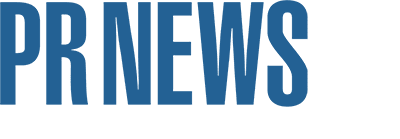
There was a slew of PR-related studies released recently.Some contained good news for the industry, others didn’t.
1. The Plank Center for Leadership in Public Relations surveyed 1,020 communicators working in various types of organizations in North America (split 50-50 in terms of gender, average age 46). Not surprisingly, it found building and maintaining trust is the profession’s top issue.
Other findings: many organizations are concerned about fake news, but are unprepared to identify and manage it; senior communicators are involved in strategic decisions, though their power is not shared with those lower in the org chart, especially women; there’s a “significant” gender gap in the profession; and (not surprisingly) “everyone is stressed.”
What’s PR? (Asked with a U.K. Accent)
The next survey came from the U.K. More than one-third of senior executives from companies there with at least 1,000 employees said they lack “a good understanding” of what PR does. The larger the number of employees in a company, the less understanding its execs had of PR’s work.
Equally astounding is that 20 percent in the survey of 300 senior executives didn’t know what the acronym PR stands for. And just 15 percent listed PR in their top five choices of business functions they had the strongest understanding of.
On the upside, 80 percent of those who understand PR said it brought “good value” to their company, Richard Benson, CEO of Releasd, which commissioned the survey, told us. [Note to Subscribers: This report can be found in the PRNEWS Resource Center.]
He added that just 52 percent of production execs had engagement with PR. The prescription, he said, is education. “Speaking to departmental heads, explaining how the PR team operates and asking how it can better serve their needs is a practical place to start.”
Tout Only the Important PR Examples
Another tip, instead of bombarding executives with proof of PR’s prowess, alert them to only the most important examples and illustrate clearly the tie between PR and business results, Benson recommended. He underscores clarity. “When two in ten execs don’t even know what PR stands for, it’s unlikely they’ll engage with…the plethora of …acronyms that we throw at them.” His advice: “carefully pick a handful of simple metrics…clearly explain what they are and why they are relevant to the business.
Last, make sure your results are delivered to executives in a convenient format, perhaps a mix of visuals and text.
An Ogilvy survey of more than 300 global journalists found that earned media strategies remain a solid bet.
Its 2019 Global Media Influence Survey said corporate announcements, such as financial reports, CSR initiatives and strategic decisions are the most influential factors driving earned media coverage and brand reputation globally. These were more influential than third-party endorsements from social media influencers, for example. Just 10 percent of journalists said influencers were the most important sources coloring their content.
Twitter Tops Journalists’ List
Less surprisingly, it found Twitter is the social media platform that most often shapes reporters’ coverage. It ranked first with an average of 48 percent of reporters globally. 29 percent named Facebook or Instagram as their top shapers.
The regional differences, though, bear scrutiny. In Asia Pacific, Facebook and Instagram carry the most weight with journalists (41 percent). The rest of the list is WhatsApp (34 percent) with Twitter at 20 percent.
Globally, as we noted above, Twitter (48 percent) is the most influential for journos, then Facebook (29 percent) and WhatsApp (17 percent). Snapchat was last on the list. It trailed the above as well as WeChat, LinkedIn and Glassdoor.
Earned Media’s Long Life on Twitter
“Earned coverage appears to live longest on Twitter, likely due to Twitter’s ability to compile major headlines of the day and streamlining the discovery process with users never having to leave the platform,” Tara Mullins, SVP of Ogilvy’s Media Influence offering, said in a statement.
Emphasizing what Katie Paine wrote about the lasting nature of crises (pp 5-7), the survey also found that nearly all journalists (89 percent) include past coverage in their stories. Ogilvy said this is “a reminder that both positive and negative stories live forever online.”
PR and Profitability
Rick Gould’s annual survey of U.S. PR firms found profitability at 16.3 percent of net revenue. 41 firms participated in the Gould+Partners survey. Those with less than $3 million in revenue netted 14.9 percent. The largest firms, in excess of $25 million, netted 15.7 percent, a result of flat organic growth, Gould said.
Other findings: revenue per professional staff reached $253,054, up from $239, 917 in 2017; overhead averaged 25.4 percent, 1 percent higher than the previous year; and staff turnover averaged 22.9 percent versus 24.7 percent in 2017.
MuckRack’s Insight
As you know, we rarely cover product news. Here’s an exception. MuckRack tells us exclusively it will announce later this month a collaboration with Memo. The partnership will allow MuckRack to provide PR pros with comprehensive data about their earned media placements in select magazines.
The metrics will include page views, time engaged and scroll depth. Data will come directly from media publishers, ensuring its accuracy, MuckRack CEO Greg Galant tells us.
“We’ll be the only PR software suite that will include all this data in one place,” he claims. Galant didn’t provide the number of publishers on board so far, but mentioned Vanity Fair, The Atlantic, Allure, Entertainment Weekly, Wired, Sports Illustrated and NY Magazine, among others.
CONTACT: cbonelli10@gmail.com richard.benson@releasd.com rebecca.schmidt@ogilvy.com rick@gould-partners.com emma@sawhorsemedia.com
